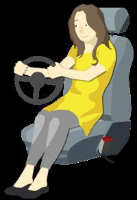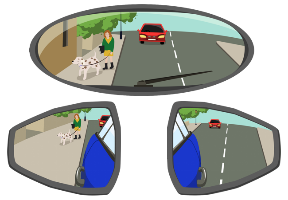
RPT Driver Training - Driving Lessons Handouts
When taking driving lessons with RPT Driver Training, you will get course handouts, to to reinforce what you have learned during the lessons.
These handouts will be sent via e-mail for you to look over to back up the knowledge you have gained during your lesson, and for you to have a quick look over before your next lesson to refresh your memory.
The more you remember the more time you will spend driving during your lesson.
Why use a handout?
During a lesson, especially one were a new subject is introduced. You may feel you have had to absorb a lot of information, in a short space of time. Using the Handouts provided, you will have time to go over the subject in your own time, to have it clear in your own mind, and a better understanding of the aim and objective of what you are trying to achieve. If you understand more the better you will become on the road. If there is anything you don’t understand on the subject. Discuss it with your instructor, remember it is a partnership we have to work together, to get you to your goal of gaining your full driving licence.
Examples of Handouts
The cockpit drill is usually the first thing a driver should do after getting into the vehicle.
The basic cockpit drill involves the following items: Doors, Seat, Steering, Seatbelt, Mirrors. This can be remembered using the acronym D.S.S.S.M.
some people use different variations on this sequence, often including a check that the handbrake is properly engaged. Your instructor will teach you his or her preferred cockpit
drill sequence, which should be very similar to (if not the same as) this one.
Doors
All doors should be fully closed. If you look in the side mirrors, you should be able to see if all the side doors are flush with the side of the car. The boot should also be
fully closed before starting any journey.
Always be careful when opening your door and remember to keep a firm grip on the handle
when opening a car door on a windy day.
You should always check it is safe before opening the door. Remember to check the blindspot.
Seat
Most car seats can be adjusted in four ways. Forward and backward, up and down, the angle of the back (sometimes known as the rake) can be changed, and the head restraint can be adjusted up and down (sometimes forward and backward as
well).
The first check to make when adjusting your seat is to press the clutch pedal fully to the
floor with your left foot. Your left knee should be slightly bent, with no need to stretch.
Steering
Place both your hands at top of the steering wheel. Your elbows should be very slightly bent. If not continue to adjust the seat until this is so (this can be a good time to
adjust the rake).
When your seat is correctly adjusted, you should be able to run your hands from the top to
the bottom of the steering wheel with ease. You should also be able to push the clutch fully down and release it without any problem. Make sure you can see clearly over the steering wheel and into
the road ahead.
Some cars allow you to adjust the angle of the steering wheel. This can be helpful in getting a good driving position and maximising visibility.
The head restraint should be close behind your head (but not touching) and the firm part of it should be roughly level with your ears.
Seatbelt
The easiest way to grab your seatbelt is to use your left hand and reach over your right shoulder. Once clicked into its socket, the seatbelt should sit flat against you without
any twists. Check it is properly engaged and will not pull free of the socket without pressing the release button. You should still be able to lean forward in your seat and the seatbelt should extend
to allow this.
When you release your seatbelt, it may try to spring back to its starting position very
quickly. Keep hold of it so it reels back in gently.
Mirrors
Your interior mirror should be adjusted so you can see as much as possible through the back window of the
car.
If they are not currently needed, it is a good idea to lower any head restraints in the
back of the car so they do not obstruct your view. You should also remove any other possible obstructions, including unnecessary stickers on the rear window.
Your side mirrors should be adjusted so you can see a little bit of the side of the car, a fair bit of sky and plenty of road.
Notice how objects appear further away in the side mirror than they do in the interior mirror. See the Zones Of Vision section for more details.




